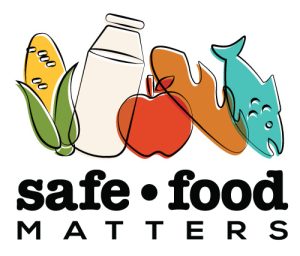Forest Spraying 1: Based on Faulty Approval
Pesticides are being sprayed on Canadian forests, killing the diversity of forest life. The resulting harms are plant and animal death, destruction of forest foods, and accelerating forest fires.
How is this allowed?
The registration approval for this use of pesticides comes from the Pest Management Regulatory Agency (PMRA) of Health Canada, the agency responsible for “managing pests”. The licenses to spray are then granted by the provinces. (Quebec has banned forestry spraying since 2001.)
PMRA says that unwanted trees and brush are “pests”. Pests are defined in the “Pest Control” law to include “a plant… that is injurious, noxious or …Read More
EU Renews Glyphosate – Kind of
The European Commission has officially renewed the registration of glyphosate at the European level. But it’s left much of the actual decision making to individual member states.
Desiccation is outlawed, and use within 60 days of harvest is not allowed on agricultural crops. (Safe Food Matters has been in court with Health Canada over this issue for years.)
Risks and assessments left to individual states include:
the coformulants (other ingredients) contained in GLY products
exposure of consumers from foods grown in fields where GLY was sprayed the year prior
protection of groundwater and surface water
risks to small animals
indirect effects on …Read More
Kids, Candy, and Scary Stuff
Some of the fun things about Hallowe’en are the kids, the costumes, and the candy. We have some scary news about the candy.
Health Canada wants to up the levels of pesticides allowed in sugar. Big time. It has proposed to increase allowable levels of two pesticides used on sugar beets – by 200 fold and 10 fold:
Azoxystrobin (AZ) – from 0.5 to 5 ppm (10x)
Fludioxonil (FL) – from 0.02 to 4 ppm (200x)
Why? So Canada’s levels will match the US levels.
You may recall in 2021 there was a “pause” put on maximum residue limits (MRLs) because of proposed …Read More
“Highly Uncertain” Science Used for Pesticide Limits
Pesticide limits for sugar beet roots – the first up for MRL increases after the “pause” – are based on uncertain science
Confidential test data reveals there is “High uncertainty of [the] MRL estimate” for two increases of pesticide maximum residue limits (MRLs) on sugar beet roots (used for sugar products), which were requested by Syngenta and proposed by Health Canada. The proposed MRLs, which are 200 times and 10 times higher than current levels, were calculated using the OECD Calculator. The output page of the calculator flags in red that there is high uncertainty because small data sets were used.
Health …Read More
Key Scientist Resigns from PMRA’s Scientific Advisory Committee
“Bruce Lanphear” by SFU – Communications & Marketing is licensed under CC BY 2.0.
Dr. Bruce P. Lanphear, MD, MPH, has resigned from the PMRA’s newly created Scientific Advisory Committee (the SAC).
The SAC was created by Health Canada’s Pest Management Regulatory Agency (PMRA) in 2022 as part of its Transformation Agenda, and was touted recently as acting in an “advisory role” to PMRA.
A link to Dr. Lanphear’s resignation letter is below.
Some key points he makes include:
Restrictive Scope
– The terms of reference were inadequate, and too restrictive – more restrictive than those of the Pest Management Advisory Council, which improperly allows industry representatives.
– He worries …Read More


